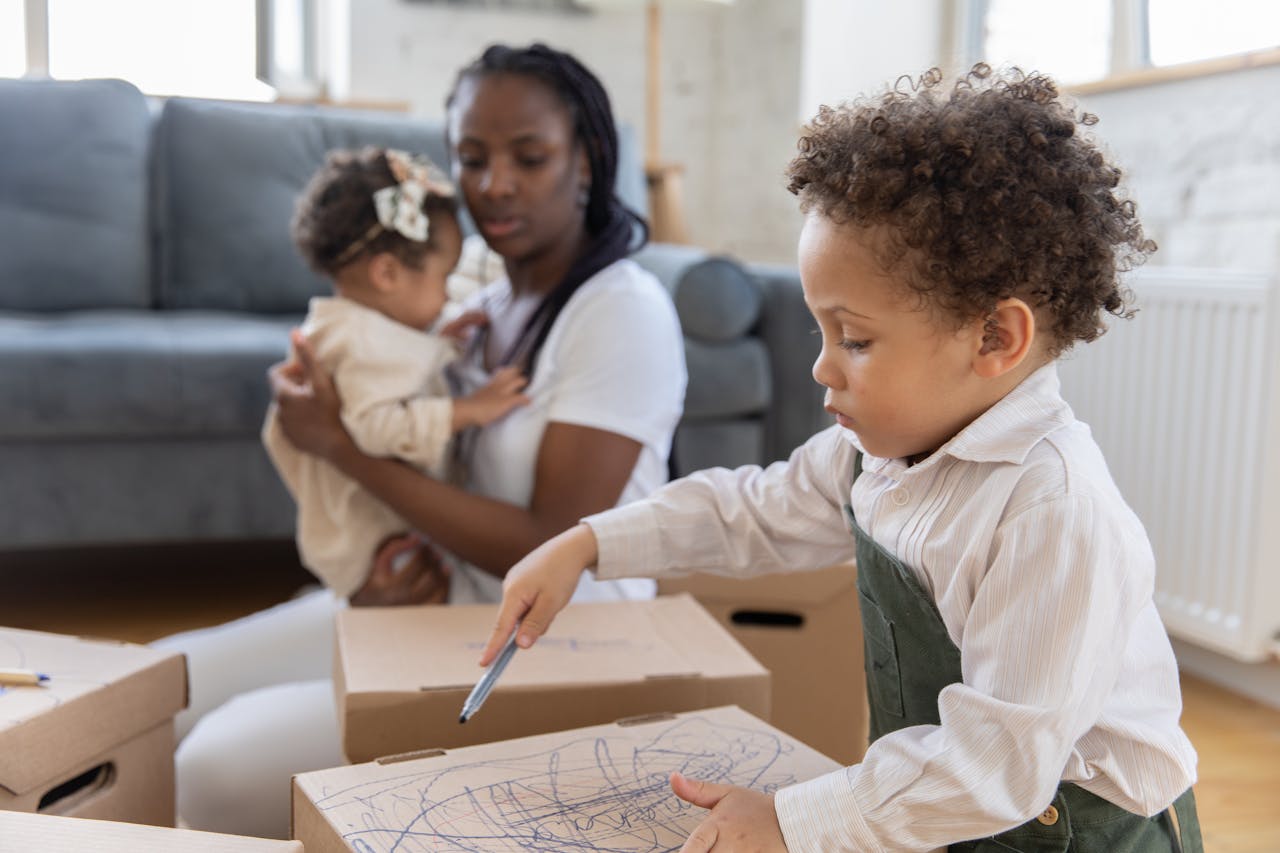How Babies React to Climate Changes During a Move

Moving to a new city—or even across the country—is a major life event for any family. But when relocating with a baby in tow, things become a little more complex. While you're focused on packing boxes, hiring movers, and setting up your new home, your baby is going through a change of their own and adjusting to a new climate. Whether you're heading from humid Miami to dry Denver or leaving the chilly winters of Chicago for the sunny shores of San Diego, babies can be surprisingly sensitive to climate shifts. Their tiny bodies are still learning to regulate temperature and often can't communicate when something feels off. That means parents need to be especially mindful when moving between climates. Here’s a closer look at how babies react to climate changes during a move and what you can do to make the transition smoother for your little one.
How to Relocate with Children
Moving with a baby—or multiple young kids—adds emotional and logistical complexity to the experience. While little ones may not fully understand what’s happening, they are highly sensitive to environmental changes. That’s why preparation is key. Keep daily routines as consistent as possible, and surround your children with familiar items, such as their favorite toys, bedding, or a beloved blanket. These comforting objects offer a sense of security amid the chaos.
At the same time, when relocating with little ones, focus on setting up a cozy, stable space for them right away in the new home. Recreating familiar sights, sounds, and even bedtime rituals—like playing the same lullaby—can ease the transition. If older siblings are part of the move, involve them in small decisions to give them a sense of control and continuity. These thoughtful touches help create a smoother, more reassuring move for everyone involved.
Temperature Regulation Takes Time
One of the most important things to understand is that babies, especially newborns, don’t regulate body temperature as efficiently as adults. When exposed to a new climate—hot or cold—their bodies need time to adapt. For instance, a baby moving from a mild to a hotter environment might be more prone to overheating or develop heat rash more easily. Similarly, moving to a cooler climate might make them more vulnerable to chills, even if you’re layering up.
Their underdeveloped sweat glands and thinner skin also make it harder to retain or shed heat. That is why sudden changes in temperature or humidity can result in fussiness, sleep disruptions, or minor health issues like colds or rashes.
How Babies React to Climate Changes During a Move: Changes in Sleep Patterns
Climate changes can impact sleep, not just for adults but also for babies. A warmer climate might mean disrupted naps due to increased sweating or discomfort. Conversely, a colder environment might cause frequent waking if the baby isn’t bundled appropriately.
Babies thrive on routine and familiar conditions. So when you move, you're not only adjusting their surroundings but also potentially their circadian rhythm. The new temperature, light exposure, and even altitude can throw things off balance. Parents might notice that it takes a few weeks for their baby to get back into a predictable sleep routine after a move.
Feeding Patterns May Shift
Climate can indirectly influence feeding patterns, too. For example, babies may want to feed more often in a warmer climate to stay hydrated. Breastfed babies, in particular, may want to nurse more frequently, even if it’s just for a short duration. On the other hand, cooler climates might lead to longer naps, which could delay feedings.
Parents should watch for signs of dehydration (fewer wet diapers, dry lips, or fussiness) and adjust feeding schedules accordingly. If you're formula feeding, remember that changes in local water composition can sometimes impact how formula mixes. Always check with a pediatrician if anything seems off.
Respiratory Responses to Air Quality and Altitude
When discussing how babies react to climate changes during a move, we’re not just talking strictly about the temperature and weather but also about altitude. For instance, babies moving to cities with higher altitudes or drastically different air quality may initially experience mild respiratory issues. That could present as nasal congestion, sneezing, or dry coughs—especially in places with dry or dusty air.
If you're moving from sea level to a higher elevation, your baby might seem more tired or sleepier during the first few days as their body adjusts to the thinner air. Generally, symptoms are short-lived, but keeping a humidifier in the baby’s nursery can help relieve dryness and congestion.
Boosting Immune Support During the Transition
Moving is stressful enough without a sick baby. Unfortunately, babies moving to a new region might be exposed to different allergens or local germs, which their immune system isn’t yet accustomed to. It’s not uncommon for little ones to catch a cold or develop mild symptoms after a move.
While you can’t bubble-wrap your baby, you can make the transition easier by ensuring they get enough sleep, stay hydrated, and avoid crowded public areas for the first few weeks after the move. A quick check-up with your pediatrician—especially if your baby has known sensitivities—can also help you plan for the climate shift.
How to Ease the Transition
Here are some actionable tips to help your baby adjust smoothly to a new climate:
- Dress in layers: Instead of heavy clothes, dress your baby in breathable layers so you can easily adjust as temperatures fluctuate.
- Create consistency: Stick to your routines as much as possible—feeding, bath time, naps, and bedtime.
- Stay indoors at peak hours: In extreme climates, limit outdoor time during the hottest or coldest parts of the day.
- Watch for signs: Keep an eye on your baby’s mood, appetite, and overall behavior. Any major change could be a signal that they need more support.
- Consider hiring a nanny or part-time caregiver: Even temporary help can give you time to unpack, settle in, or focus on older children while ensuring your baby gets one-on-one attention in a new and possibly overstimulating environment.
- Be patient: Just like adults, babies need time to settle in. Give them grace—and yourself, too.
Final Thoughts
Moving is a big adventure and comes with many emotions for everyone involved. When climate change is part of that move, it adds complexity for your baby. The good news? Babies are incredibly adaptable. With some understanding of how babies react to climate changes during a move, a little planning, close observation, and lots of snuggles, most little ones can adjust to new climates within a few weeks. As parents, your calm and attentiveness set the tone. So, while it may take a few extra naps (for everyone!) and some trial and error, your baby will find their rhythm again—and so will you.






